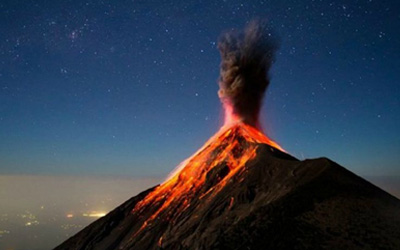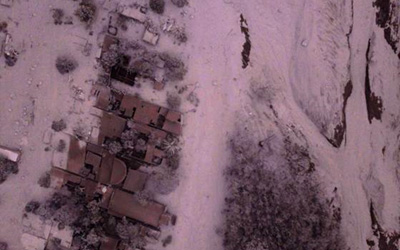The recent eruption of Fuego volcano in Guatemala was so destructive due to the pyroclastic flow, a mix of ash, rock and volcanic gases that are more dangerous than the slow creep of lava.

On June 3, the Fuego Volcano spread ash 6 miles into the sky and about 10 miles across towns and farms. The eruption left more than 110 dead and almost 200 people missing. Up to nine explosions were recorded every hour and approximately 1.7 million people has been affected by the eruption. This catastrophe was so deadly due to the pyroclastic flow, a mix of ash, rock and volcanic gases. The pyroclastic flow reached 1,000 degrees Celsius according to a CNN meteorologist.
Pyroclastic flows are mainly rock fragments combined with hot gases that move extremely fast due to gravity. These flows can reach 700 kilometers per hour, faster than common cars. A pyroclastic flow consists of two parts: a basal flow of coarse fragments that move the ground and a cloud of ash and volcanic gases that rises above. They form by three different reasons. The first is due to the explosive eruption when the column of ashes and gas collapses. Then, as the column rises, it cools. When this happens, the column becomes so dense it falls. The second, instead of erupting in a big cloud, the volcano boils over and the material of the volcano rapidly moves down. The third reason is the collapse of lava domes and flows which become unstable and break off the mountain as an avalanche. The case of the eruption in Guatemala is the second reason.
The difference between lava and pyroclastic flows lies on its speed. Lava creeps slowly and burns everything in its path but pyroclastic flows destroys nearly everything by land and air, its speed is usually greater than 80 km per hour, but it can reach 400 km per hour. Added to the speed variable, temperature plays a big role, the flows’ temperature is around 700 Celsius, it can ignite fires, bury structures and shatter almost every object. On the other hand, lava will render the affected land unusable for years but the problem with the pyroclastic flow that occurred in Guatemala wasn’t only lava, the pyroclastic material, rocks and water turned into lahars. Lahars are flows that contain fragments of volcanic rock, they are the product of erosion on the slopes of a volcano. These move fast , and can incorporate water, in such a way they form a mud flow.
After this catastrophic event, the capital of Guatemala is in alert as the volcanos Fuego, Pacaya and Santiaguito have increased their activity, throwing lava and ashes. In addition to the lahar, heavy rain made things worse, tearing down trees and increasing the flow of the Panaleon River. The death toll caused by the volcano has been rising since the eruption and if appropriate measures are not taken, it can continue affecting the surrounding communities.

In Guatemala, early warning systems are indispensable thanks to the multiple risks of natural disasters to which it is exposed. However, these systems are not as developed as in other countries. According to Juan Carlos Villagran of the Center for Research and Mitigation of Natural Disasters, all early warning systems, in particular lahars, should be strengthened and the evaluation of risks must be improved to avoid possible damage.
Bibliografía:
USGS. (2016). Pyroclastic flows move fast and destroy everything in their path. Retrieved from: USGS Science for a changing world
Fritz, A. (2018). Guatemala volcano killed dozens with its pyroclastic flows. Retrieved from: Washington Post
Hughes, A. ( June 14, 2018). Guatemala volvano eruption: Latest death toll of deadly eruption. Retrieved from: Express
Yan, H. ( June 5, 2018). Why is Guatemala’s volcanic eruption so much deadlier than Hawaii’s?. Retrieved from:CNN
Related content:
Pyroclastic Flow Volcán de Fuego Guatemala 04/06/18Pyroclastic flow engulfs town in Guatemala. |

